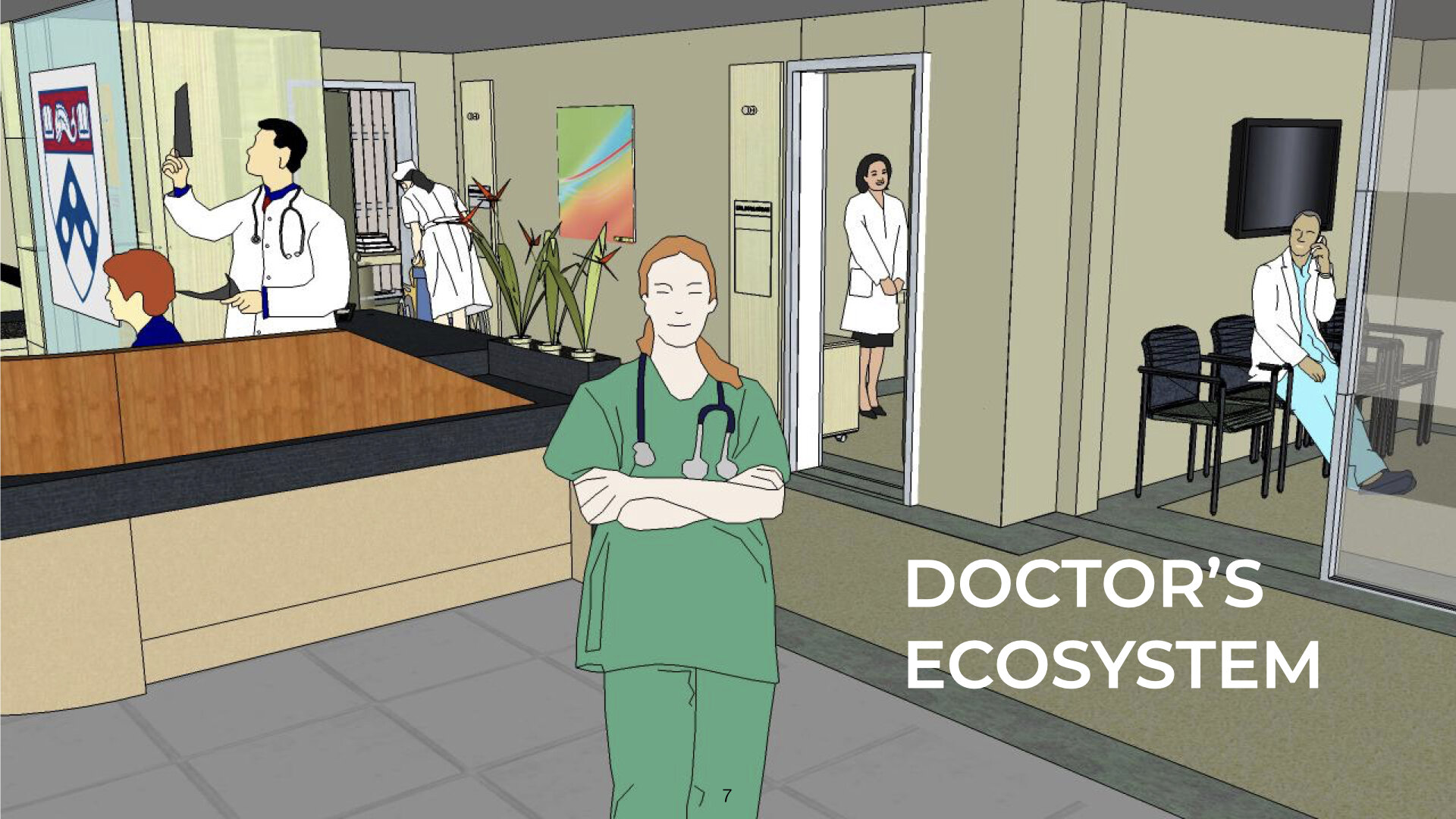Reducing Physician Burnout
Over 50% of all doctors experience some form of burnout in their careers. Penn Medicine healthcare system wanted to respond to this alarming number by studying the causes and effects of burnout among their surgeons, clinicians and researchers. While earning my Master’s at UPenn, my team and I conducted discovery research to develop guidelines and recommendations that could apply to the entire healthcare system.
Problem
How might we define the roles of stress among physicians across a wide hospital network?
How might we define and develop organizational resources to address wellness?
Research
Penn Medicine’s internal design organization (Center for Healthcare Innovation) working with Dr. Bellini was instrumental in getting my design team connected to 7 amazing physicians and researchers. Most of these physicians had their schedules booked months ahead and we were lucky to get 15 minutes of their time or interview them while on their clinical rotations. By seeing first-hand the incredibly high level of stress they maintained, it was easier to understand why burnout was so common. We used techniques like daily journey maps and card sorts to help get instant feedback when necessary.
Problem outline, interviews, sketch ideation, card sorts, affinity maps
Synthesis
My team and I conducted detailed analysis of each physician’s responses, behaviors and needs in order to find patterns and build an understanding of the solution. In order to address such a systemic issue as this one, we needed to define a mental model for stakeholders to see the scope of the problem and for us to target solutions. I defined this project’s core insight — physician’s flip Maslow’s hierarchy of needs in order to maintain their rigorous work schedules. Therefore to address burnout systemically, each level of the hierarchy would need different types of solutions.
Core insights, mental model of problems and solutions
Recommendations
With feedback from stakeholders on our concepts, we were able to identify long and short-term goals for the health system. We saw that the key criteria for a solution was determining level of awareness in wellness activities. Therefore, a communication strategy that could target the channels doctor’s already use like colleagues, lunchrooms and the chaplain’s office should be the first targets. Beyond that there were myriad basic needs to be met like food, coffee and physical spaces that the hospital system could address with further research.
Design analysis, strategic deliverables




